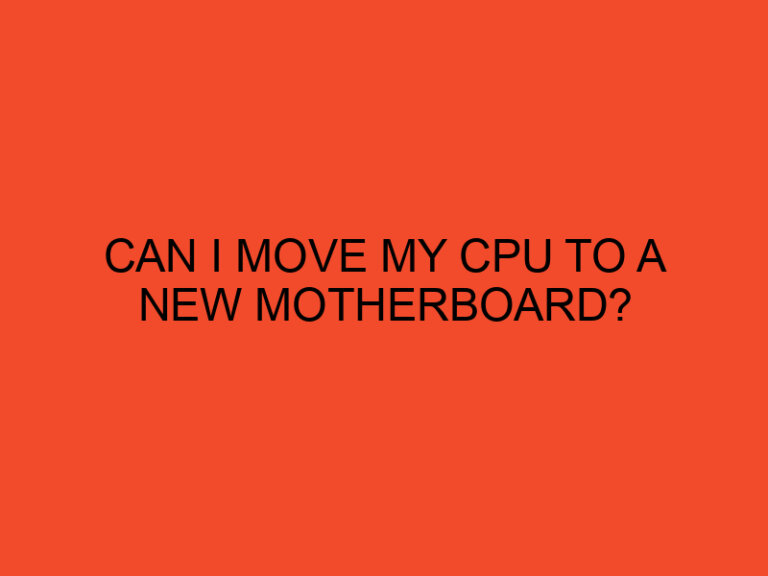In the ever-evolving world of computer technology, memory plays a crucial role in determining the performance of a system. When it comes to Random Access Memory (RAM), two prominent generations have dominated the market – DDR4 and the more recent DDR5. Both these technologies are significant advancements over their predecessors, but they do have some notable differences. In this article, we’ll explore the dissimilarities between DDR5 and DDR4, shedding light on what sets them apart and how they impact overall system performance.
Table of Contents
DDR5 vs DDR4: What’s the Difference?
nderstanding DDR4 and DDR5
DDR4: The Fourth Generation
DDR4, short for Double Data Rate 4, was introduced in 2014 and quickly became the mainstream memory technology for computers and other devices. It succeeded DDR3 and brought notable improvements in speed, efficiency, and capacity. DDR4 RAM modules are widely available and compatible with a vast range of systems, making them a popular choice for consumers and businesses alike.
DDR5: The Fifth Generation
DDR5, as the name suggests, is the fifth generation of Double Data Rate memory technology. It made its debut in the consumer market in 2020 and represents a significant leap forward in memory performance. DDR5 offers even higher data transfer rates and improved energy efficiency compared to DDR4. While it initially targeted high-end systems, it has since become more accessible to mainstream users.
Performance Comparison: DDR5 vs DDR4
Data Transfer Speeds
One of the most significant differences between DDR5 and DDR4 is their data transfer speeds. DDR4 typically operates with speeds ranging from 2133 MHz to 3200 MHz. In contrast, DDR5 takes memory speeds to new heights, starting from 3200 MHz and going up to 8400 MHz and beyond. This substantial increase in data transfer rates translates to faster loading times for applications, improved multitasking, and smoother overall system performance.
Capacity and Future Scalability
DDR4 RAM modules typically come in capacities ranging from 4GB to 128GB, with the majority falling in the 8GB to 16GB range for consumer applications. On the other hand, DDR5 opens the door to higher capacities, with modules currently available in sizes up to 128GB and the potential for future advancements leading to even larger capacities. This increased capacity enables more extensive data handling and benefits memory-intensive tasks such as video editing and 3D rendering.
Voltage and Energy Efficiency
DDR5 operates at a lower voltage compared to DDR4, which contributes to improved energy efficiency. The reduced voltage helps in lowering power consumption while delivering higher data rates. This energy efficiency is particularly relevant in mobile devices and laptops, where battery life is a critical factor.
On-Die ECC (Error Correction Code)
DDR5 introduces On-Die ECC, a feature that enables error correction directly on the memory chip. While DDR4 also supports ECC, it typically requires an additional chip on the motherboard. With On-Die ECC, DDR5 offers more efficient error correction and better data integrity, leading to enhanced system stability.
Compatibility and Cost
As a newer technology, DDR5 initially faced limited compatibility with older systems that supported only DDR4 or earlier generations. However, as DDR5 has gained traction, motherboard manufacturers have started producing models with DDR5 support, making it more accessible to consumers. The cost of DDR5 modules was higher initially due to their novelty and limited supply, but as production ramps up, prices are likely to become more competitive.
Which One Should You Choose?
The choice between DDR5 and DDR4 largely depends on your system requirements and budget. If you are building a new high-end gaming rig or workstation and want the latest and greatest memory technology, DDR5 is the way to go. Its higher data transfer rates, increased capacity, and energy efficiency make it a compelling choice for demanding tasks.
On the other hand, if you already have a DDR4-based system and are not planning a complete upgrade, DDR4 is still a reliable and cost-effective option. DDR4 modules offer excellent performance and are compatible with a wide range of existing motherboards and CPUs.
Conclusion
In conclusion, DDR5 and DDR4 are both remarkable memory technologies that have played crucial roles in shaping the computing landscape. DDR5 stands as the more advanced and powerful option, boasting higher data transfer rates, increased capacity, and improved energy efficiency. However, DDR4 remains a reliable and popular choice for many consumers due to its established compatibility and cost-effectiveness. Whether you opt for DDR5 or DDR4, both technologies contribute significantly to the overall performance and user experience of modern computer systems.
FAQs
Can I use DDR5 RAM on a DDR4 motherboard?
No, DDR5 RAM is not compatible with DDR4 motherboards. DDR5 requires specific motherboards designed to support this newer memory technology.
Is DDR5 RAM backward compatible with DDR4?
No, DDR5 RAM is not backward compatible with DDR4 motherboards. DDR5 modules require a motherboard that explicitly supports DDR5.
What are the benefits of upgrading to DDR5?
Upgrading to DDR5 offers higher data transfer speeds, increased memory capacity, improved energy efficiency, and better error correction, resulting in a noticeable performance boost for memory-intensive tasks.
Are there any downsides to using DDR5 RAM?
As with any new technology, the initial cost of DDR5 RAM modules may be higher than DDR4. Additionally, early adopters may face limited motherboard options until DDR5 becomes more widespread.
Can I mix DDR4 and DDR5 RAM modules in the same system?
No, mixing DDR4 and DDR5 RAM in the same system is not recommended and may lead to compatibility issues and system instability.





